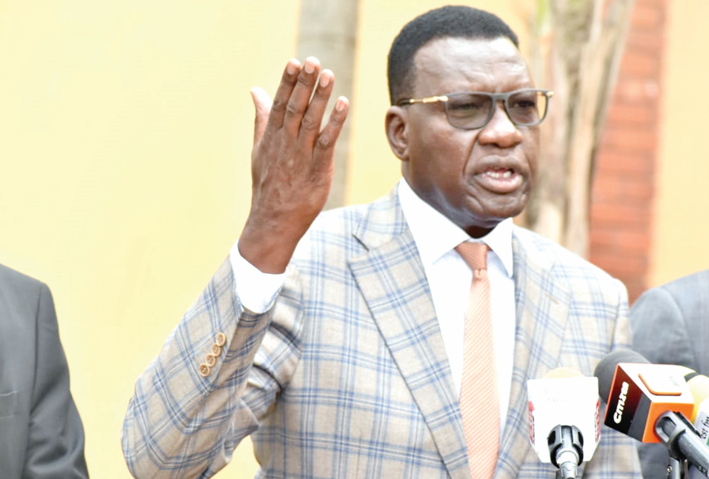Faulty systems cause of 10-hour blackout: Report

A faulty power protection system at the Lake Turkana Wind Power (LTWP) plant and a hurried decision by technical staff to shut it down following an overvoltage have been blamed for last Friday’s power outage that left the country in darkness for more than 10 hours.
A preliminary report by a multi-agency team whose recommendations Energy and Petroleum Cabinet Secretary Davies Chirchir relied on to remove LTWP from the national grid until further notice, appears to blame the Marsabit-based power plant.
Chirchir had on Monday said that the government had removed LTWP from the national grid until it produces logs that would enable technicians to determine how the power plant switched off its systems after sensing the overvoltage.
A Cabinet meeting in Kakamega on Tuesday chaired by President William Ruto mandated Chirchir to come up with measures that would ensure that there are no similar recurrences in future.
“The Cabinet regretted the total electrical grid outage that led to a nationwide blackout on Saturday last week. Cabinet consequently directed the review of the power distribution system in the country, to ensure that the unfortunate occurrence shall not recur, “a statement released at the end of the meeting stated.
Power plant
Although LTWP has insisted that it was forced to go offline and stop generation following an overvoltage in the national grid which caused the power plant to go off automatically to avoid extreme damage, the preliminary report now says that the plant’s systems did not switch-off systematically as is required.
Had they switched off systematically, according to the report handed over to Chirchir yesterday, this would have enabled other generating plants in the country to “sense” the power failure at LTWP and automatically pick up.
Such an interruption at LTWP should have been immediately compensated by other power generators in the national grid system.
“LTWP sensed high voltage in the system and hurriedly switched off to avoid damages to their system, leading to an imbalance in the national grip. If LTWP had systematically switched off their line, the other generators would have picked up,” says the report.
In normal circumstances, LTWP automatic system should have switched off its five in-house generators one after the other. But in this case, it was a sudden shut down of all the generators.
Protection system
“In essence their protection system was faulty and could not switch-off systematically and because of the abrupt shutdown, the other generators in the country switched off automatically after sensing danger,” technicians involved in the multi-agency fact finding team said in their report.
Technicians say the protection system has to be able to sense any potential danger and send signals to machines, which would automatically switch-off in a systematic manner.
It has also emerged that the imbalance caused on Kenya’s national grid spilt over to neighbouring Uganda and Rwanda which also experienced national blackout at the same period.
Uganda had at that time connected its national grid to the Kenyan, making it experience the imbalance that had been caused on the Kenyan side.
As a result of a large portion of the East African region experiencing the blackout caused by the imbalance in the Kenyan national grid, it had to take quite some time for technicians to restart all the generators to restore power.
“Once such an outage has taken place, we resort to black start, which entails isolated power stations being started individually and gradually reconnected to one another to form an interconnected system again. And this takes some time to stabilise the power supply,” says one of the technicians.
For last Friday’s case, the Kenyan engineers at Kamburu Power station had to use diesel power generators to systematically re-energise the generators to restore power in the country.
LTWP had in a statement said it had been forced to go offline by an “overvoltage situation in the national grid system which, to avoid extreme damage, caused the wind power plant to automatically switch off.”
The plant had at the time been producing nearly 270 Megawatts (MW) (15 per cent) of the national output at the time.
“Lake Turkana Wind Power (LTWP) wishes to assert that it has not caused the current power outage. LTWP was forced to go offline and stop generation following an overvoltage situation in the national grid system which, to avoid extreme damage, causes the wind power plant to automatically switch off,” the wind power had said in a statement.
Questions have also emerged over the existence of a solar power generator between Kitale and Eldoret that has not been licensed by the Kenya Electricity Transmission Company (KETRACO) to supply power to the national grid.
According to officials from the Ministry of Energy, some unnamed influential forces within the government have made unofficial arrangements with the Turkwel Power Station to have the Solar plant supply power to the national grid during day time.










